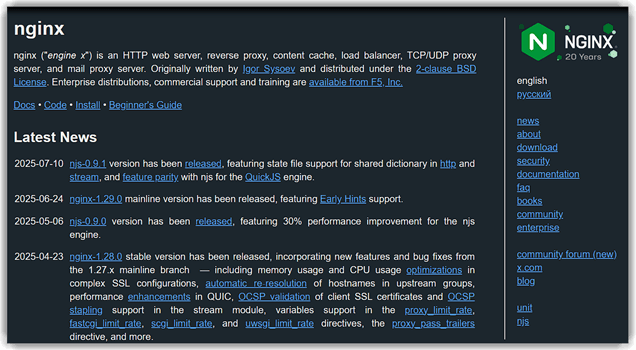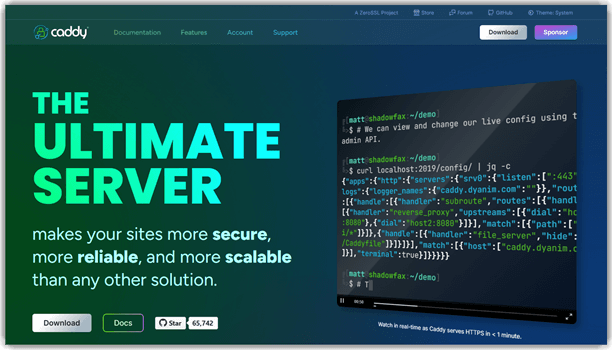6 BEST Reverse Proxy Providers (2025)

Struggling to find a reliable reverse proxy? Well, there are multiple reverse proxy providers in the market, but the challenge is finding a good one. Using a random reverse proxy service can lead to security vulnerabilities, slow response time, and insufficient support for web protocols. You may also receive poor load balancing, broken SSL/TLS handling, improper logging, high downtime, and inconsistent caching. Additionally, I noticed issues like limited error handling, complex debugging, and inaccurate URL rewriting in ordinary providers.
To help you avoid such service providers, I spent over 110 hours testing 35+ reverse proxies. Therefore, this review is backed by my first-hand experience and offers an unbiased insight into these tools. You can now dive into this article to find a suitable provider for your requirement. Read more…
Best Reverse Proxy Providers: Top Paid & Free Picks!
| Tool Name | Key Features | Security Features | Link |
|---|---|---|---|
| Apache | • Built-in control panel load balancer • Conducts active health checks |
• SSL/TLS encryption and decryption • Protection against all common attacks |
Learn More |
| NGINX | • Rewrites header and URLs • Caches both dynamic and static content |
• HTTP basic and JWT authentication • IP address filtering |
Learn More |
| HAProxy | • Active/passive failover for system availability • Advanced ACLs |
• Traffic filtering • Protection for bot-based and DDoS attacks |
Learn More |
| Caddy | • Powerful header manipulation • Response interception |
• Automatic HTTPS • Strong TLS configuration |
Learn More |
| Traefik | • Simplifies SSL management • Flexible traffic routing rules |
• Web Application Firewall • Custom certificates |
Learn More |
1) Apache
Apache is a well-known HTTP server that offers a robust reverse proxy server feature. It can forward client requests to the other servers, such as microservices or app backends, and return the response to the user. Therefore, it can be helpful for non-technical business owners who need load balancing, etc.
I like its capability to hide internal servers from the public internet, making it difficult for attackers to exploit the servers. It also enables authentic gateways that protect APIs from any form of unauthorized access.
Features:
- High Availability: I noticed that whenever my backend server crashed during the peak hours, the traffic moved to a standby server. This helped in preventing power outages, since I was able to configure Apache to use the standby servers or spares.
- Balanced Manager: It is a web-based, built-in control panel used for load balancing. This feature helped me view the live status of the reverse proxy set up and check the present configuration of all my active balancers and their members. Additionally, I could adjust the load balance in real-time.
- Powerful Health Checks: Using Apache, I realised that it can conduct active health checks on backend servers. It uses modules like the mod_proxy_hcheck module to perform these advanced health checks. This tool also excludes the unhealthy nodes automatically, making it great for users who want to stream any media.
- Protocol and Header Management: Apache can rewrite headers, manage cookies, take care of SSL termination, and more. Thus, business owners can use it to manage SSL certificates, helping backend app servers communicate through HTTP and improve performance.
Pros
Cons
Pricing:
It’s an open-source, free tool.
Link: https://www.apache.org/
2) NGINX
NGINX is one of the top high-performance reverse proxies that is popular for its speed. I was also impressed with its scalability and the way it efficiently uses the resources. It also made configuring SSL termination and load balancing easy. Hence, DevOps Engineers and system administrators will benefit from using it.
Its latest version has state file support for shared dictionary in HTTP and stream. It also features parity with njs for the QuickJS engine. Therefore, I received advanced reverse proxy logic and real-time config updates along with session management. However, if the limit for file descriptors or worker connections is too low, it can affect its performance. I suggest adjusting the worker connections to meet the level of the traffic.
Features:
- Authentication: I was able to enforce the JWT validations (using plugins), Basic Auth. This helps restrict access based on the location and the IP address. It only takes about two lines to set up a basic HTTP auth for the private dashboards, allowing you to secure internal tools easily.
- SSL/TLS Termination: It can offload SSL processing from backend services. Thus, helping you manage HTTPS easily. This enabled me to centralize certificate renewals through its “Let’s Encrypt”, reducing the CPU usage on Node.js servers.
- URL and Header Rewrites: This reverse proxy can rewrite URLs and headers when requests are made. It’s useful for the API gateways or if you need to integrate legacy systems. Additionally, it can strip sensitive headers and limit the request rates.
- Health Checks: It automatically monitors the health of the backed servers and the routes around failures. I noticed that during the production, defining upstreams with fail_timeout and max_fails kept the service available even during the outages. Thus, startups offering webhosting services or teams that operate with multiple backend servers can use it.
Pros
Cons
Pricing:
It is a free, open-source tool
Link: https://nginx.org/
3) HAProxy
HAProxy is a reliable reverse proxy that offers TCP/HTTP load balancing. It provides efficient health checks, ACLs, and sticky sessions. While deploying it in production, I observed its non-blocking, multithreaded engine. It balances thousands of daily requests with effortless reloads, which can elevate your app’s performance.
It has been providing reverse proxy services for over two decades now. The best part is that I experienced almost negligible downtime, and there wasn’t any lagging even during heavy duty. Hence, streaming companies or even non-technical businesses looking for a powerful reverse proxy with high speed can try HAProxy.
Features:
- Reliable Availability: Its active/ passive failover makes sure that the services are always up and running, even when a node fails. I noticed this when I faced a server outage; however, there was no major downtime. It instantly rerouted the requests and kept my app running. Therefore, the gaming backend engineers can highly benefit from it.
- Sticky Sessions: I tested its sticky sessions and found out that it prevents users of my app from getting logged out. Thus, E-commerce managers who need to offer a consistent user experience, and even shoppers who opt for online auctions and bidding sites, can use it.
- Advanced ACLs: Its access control list allows me to route the requests based on the IP addresses, URLs, and headers. I also set up fine-grained routing, hence the API calls and the static assets were taken care of by different clusters. Thus, improving the performance.
- Extensive Protocol: This reverse proxy supports, HTTP/1.x, HTTP/2, HTTP/3, WebSocket, FastCGI, and gRPC. Which means a single reverse proxy for the traditional web apps, WebSocket-based chat, and APIs are all managed in a centralized location.
Pros
Cons
Pricing:
It is a free, open-source tool
Link: https://www.haproxy.org/
4) Caddy
Caddy offers one of the most flexible reverse proxies. It allows advanced requests, offers dynamic routing, health checking, and much more. I also used its handle_response to identify 502 errors for my backend, which allowed me to switch to a fallback page easily.
While using Caddy, I realized that only the client-facing side of the proxy needs to be HTTP. On the other hand, I could use any other protocol for the round-trip with the backend. Hence, this mix and match make it flexible enough to meet today’s microservices and diverse infrastructures. So whether you are an IT admin maintaining legacy on perm apps or a DevOps at a fast-growing SaaS startup, it’s suitable for both.
Features:
- Dynamic Upstreams: You can add backend servers or remove them mid-stream if you want. The best part is that you can do so even if no backend is ready. As per my research, Caddy is smart enough to hold the request till a backend shows as available before you get an error response.
- Header Manipulation: Caddy offers powerful header manipulation that allows you to control both the request and the response headers. As an admin, you can use its header_up and header_down directives to add, modify, and remove headers. With such control, I could enforce security policies such as injecting authentication tokens.
- Load Balancing Policies: It supports random, least connections, round-robin hash-based affinity (by URI, Cookie, IP, Header, and more), and weighted policies. Thus, an IoT platform architect can use it to optimize traffic flow, prevent the backend from overloading, and more.
- Response Interception: This tool can note specific responses, such as status codes and errors, and manage them as needed. Therefore, I could use it to modify the response and show a customized error page. Additionally, I could log the details before the client gets their hands on it, offering me better control.
Pros
Cons
Pricing:
It’s a free, open-source tool.
Link: https://caddyserver.com/
5) Traefik
Traefik is a modern reverse proxy that offers unique capabilities such as powerful configuration and service discovery. Thus, it can automatically configure routing by discovering the services in real-time. I found out that it simplifies SSL management with an automatic certificate generation via the ACME providers such as Let’s Encrypt.
Therefore, when I was running Docker containers for hosting various web apps, I didn’t have to manually edit the config files. Moreover, you won’t have to restart it every time you launch a new container. However, note that dynamic configurations tend to lead to errors such as routing failures. Hence, just start with a minimal configuration and then introduce the complex ones later.
Features:
- Free SSL Certificates: It can find and renew the SSL certificates from Let’s Encrypt for your site. All you have to do is set your email and leave it to Traefik to handle the HTTPs for your website.
- Simplifies Complex Deployments: Since I have multiple services spread across different cloud providers and servers, I put Traefik to the test. Overall, it handled all my complex routings and protocols, which was impressive. Therefore, whether you are a solo web developer or someone who hosts multiple apps in the cloud, this reverse proxy simplifies your work.
- Security Features: Traefik offers automatic HTTPS, Let’s Encrypt support, Custom Certificates, Authentication, and a Web Application Firewall. Hence, users who are looking for a secure reverse proxy, such as a financial-sector cybersecurity team, can use it.
- Powerful Middleware: It includes a powerful middleware suite that allows me to add features like API protection, load balancing, and routing control. I realised that it is also quite beginner-friendly since it helped me add these features without any complex coding.
Pros
Cons
Pricing:
Free to download. You can contact support to get the quote for its other commercial add-ons.
Link: https://traefik.io/traefik/
6) Envoy
Envoy is a high-performing open-source reverse proxy by Lyft. It is mainly designed for cloud native applications. The latest version of Envoy now has an updated container base that can patch the glibc vulnerabilities. Additionally, I noticed assorted bug fixes and some stability enhancements.
Its deep observability of L7 traffic, MongoDB, and DynoDB, etc., is an excellent feature. Envoy is also self-contained and has a tiny memory footprint. However, its steep learning curve can be an issue initially. Therefore, start with basic routes and layer the features with minimal pace.
Features:
- Rich Metrics: Envoy gives you rich metrics and traces through Datadog, Jasper, and Prometheus. Therefore, I received real-time insights into error rates, latency, and traffic levels. This is great for a news publisher’s operations lead as it can help you see traffic surges on breaking news and scale your services.
- Limiting Rate: Envoy provides configurable limits for every route and user. Its API key also helps prevent DDoS and abuse. If you are an API gateway owner in a microservice organization, you can use it to protect the backend services from abuse. Thus, ensuring fair usage among the clients with such granular control.
- Flexible Authentication: It allowed me to plug in JWT validation, or you can also use OAuth to secure access at the edge. For example, in the mobile app, only users with valid tokens can get the premium endpoints. This keeps the backend API safe from any unauthorized access.
- Reloading and Dynamic Config: You can easily add clusters, update certificates without facing downtime, or change routing. It can also be helpful for a government agency’s CIO since the hot reloading and dynamic configuration can refresh the security certificates instantly. Moreover, they can add new clusters for upcoming services without any service outage.
Pros
Cons
Pricing:
It’s a free, open-source tool
Link: https://www.envoyproxy.io/
Comparison Table:
Here is a comparison table to help you take a quick glance at all the features of the reverse proxies:
| Feature / Tool | Apache | NGINX | HAProxy | Caddy |
|---|---|---|---|---|
| Reverse Proxy Support | ✔️ | ✔️ | ✔️ | ✔️ |
| Load Balancing | ✔️ | ✔️ | ✔️ | ✔️ |
| Automatic HTTPS | ❌ | ❌ | ❌ | ✔️ |
| Dynamic Configuration / API | ✔️ | ✔️ | ✔️ | ✔️ |
| HTTP/2 Support | ✔️ | ✔️ | ✔️ | ✔️ |
| gRPC Support | Limited | ✔️ | ✔️ | ✔️ |
| WebSocket Support | ✔️ | ✔️ | ✔️ | ✔️ |
| Config Simplicity | ❌ | Limited | Limited | ✔️ |
| Service Discovery | ✔️ | ✔️ | ✔️ | ✔️ |
| Metrics/Observability | Limited | Limited | ✔️ | Limited |
| Built-in Security | ✔️ | ✔️ | ✔️ | ✔️ |
What Are the Common Issues of Reverse Proxy Providers and Their Solutions
Here are some of the common issues that the reverse proxy provider users face, along with their solutions:
- The reverse proxies may accidentally strip or alter crucial HTTP headers, such as cookies, custom headers, etc.
Solution: To fix this, I suggest auditing the settings of proxy header management. You must also whitelist the important headers and check thoroughly if the required headers have been passed correctly. - You may face persistent issues with the sticky sessions due to load balancing
Solution: In order to solve this issue, you can implement sticky sessions with the help of IP hashing in the configuration. You can also use the cookies for stabilizing sticky sessions. Overall, ensure that all the requests coming from you reach the same backend server. - The reverse proxies may put a size limit on HTTP requests, leading to failed uploads, etc
Solution: You can address this by adjusting client_max_body_size in the case of NGINX. Therefore, check for similar settings on your reverse proxy and set required timeout values that will be suitable for larger payloads. - If your caching configurations aren’t correct, it may not cache or may provide outdated content
Solution: I recommend you review and configure the cache rules, such as cache-control headers, bypassing conditions, etc. This will help balance the freshness and speed based on what your app needs. - The URL rewriting is improper, which leads to redirection loops or broken paths
Solution: You must test all the redirects and rewrite the rules in development. Proper documentation and using logging and monitoring to catch the infinite loops or the 404 errors by the proxies can also be helpful. - In case the default timeouts are too short, it may result in a sudden drop of connection, slow APIs, etc.
Solution: Adjusting the idle and keepalive timeouts to match your app’s behaviour can solve these issues. You can also monitor the logs to identify and correct the timeout-related errors. - When you manage an SSL Certificate via a reverse proxy, it may lead to issues
Solution: Just automate the certificate renewal with the help of Let’s Encrypt and make sure that the reverse proxy takes care of SSL termination. You must also regularly monitor the certificate status to catch expiration, misconfiguration, etc. - If the reverse proxy is not scaled or configured, it can become a problem
Solution: You can enable load balancing across multiple backend servers. I also suggest optimizing the caching strategies and providing the right amount of resources, which helps handle peak loads easily. - The IP address might get masked, which complicates the analytics, logging, and security policies
Solution: Configuring your reverse proxy to forward the original client IP with the help of headers such as X-Forwarded-For can solve this issue. Additionally, ensure that the backend services are set up to read and log these headers for correct tracking. - At times, your reverse proxy might struggle with WebSocket and other protocols
Solution: You can mitigate this by choosing the providers with complete protocol support. I also suggest configuring the persistent connections and enabling the upgrades of the protocols or pass-through in your proxy settings. - If your reverse proxy rules are too complicated, then your service may be disrupted
Solutions: You can simplify the management by just using the version-controlled config files via documentation and automated testing. This will validate the changes before you deploy to production.
What are The Best Security Practices For Using a Reverse Proxy
Here are the top security practices that you must apply to reverse proxies:
- You must terminate the SSL/TLS at the reverse proxy to encrypt all the inbound connections. Furthermore, optionally, re-encrypt to the backend servers to get end-to-end security.
- Block the widespread attacks such as SQL injection, XSS, and OWASP by deploying a Web Application Firewall.
- I recommend you set headers like X-Forwarded-For. This lets your backend log the actual client IP and helps with rate limiting, security, and analytics.
- DDoS attacks can be prevented by limiting the number of requests per IP or per session. Do this especially for login and API endpoints.
- You can regularly patch and update the proxy software and its modules. This will protect you against vulnerabilities and exploitations.
- Your sensitive endpoints and dashboards should have restricted access. For this, you can use IP allowlist, access control features, and geofencing.
- The proxy dashboards can be protected with MFA and strong passwords or restricted access to private networks. You can also control interfaces using these measures.
- You can set security headers such as Content-Security-Policy, Strict-Transport-Security, and X-Content-Type-Options through the proxy layer.
- Integrate the detailed logs with SIEM tools, which will help detect anomalies, sudden traffic spikes, or failed attempts.
- You may deploy the reverse proxies in a DMZ or limit the network exposure. Thus, making sure that the backend systems aren’t directly accessible from the internet.
What Are the Differences Between Proxy and Reverse Proxy
Here’s a table that will help users looking for reverse proxies understand the difference between direct and reverse proxies:
| Aspect | Proxy (Forward Proxy) | Reverse Proxy |
|---|---|---|
| Their Role | It acts on behalf of the client | While this proxy acts on behalf of the server |
| Main Purpose | It masks the identity of its client or origin | On the contrary, this hides the identity of the server/servers |
| Primary Users | Users who want to access external or restricted sites. | This, on the other hand, is used by web servers to manage and distribute the client requests |
| Traffic Direction | It is– client to proxy and then to the internet direction | While here it is– client to reverse proxy, then to the internal servers |
| Common Use Cases | For daily users, anonymity, content filtering, and censorship circumvention | This is used for SSL termination, caching, load balancing, and firewall protection |
| Location of installation | It’s installed on the client side | While this is installed on the server/network edge |
| Purpose of Caching | It caches the content for the clients to reduce bandwidth usage | This proxy caches the content to reduce the load on backend servers |
| Security Benefits | It hides the user’s IP and filters the outgoing traffic | While it protects the backend servers and filters the incoming traffic |
| Protocol Management | The usual proxy forwards HTTP, HTTPS, or SOCKS | While it manages protocol translation, URL rewriting, and SSL offloading |
FAQs
Verdict
After carefully analyzing all of the reverse proxies above, I realized that these providers have their own strengths and weaknesses. However, as per my research, the following reverse proxies stood out to me with their performances:
- Apache: It is a robust reverse proxy provider and has high availability, preventing power outages. I also like the fact that it offers granular control over the traffic.
- NGINX: It’s easy to set up HTTP auth, smart health checks, and custom error responses, which makes it stand out.
- HAProxy: With its extensive protocol support, advanced ACLs, and almost negligible downtime, this reverse proxy makes it to my top three.






